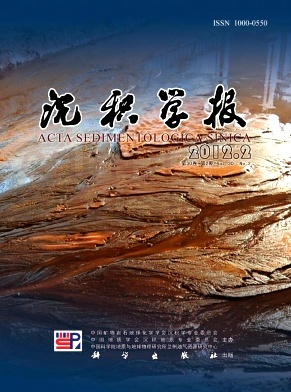Correlation of δ13Corgin Surface Sediments with Sinking Particulate Matter in South China Sea and Implication for Reconstructing Paleoenvironment
- Publish Date: 2012-04-10
-
Key words:
- South China Sea /
- surficial sediments /
- sinking particulate matter /
- organic carbon /
- isotope
South China Sea / - surficial sediments /
- sinking particulate matter
Abstract: It has been observed that the Suess effect has influenced the isotopic composition of dissolved inorganic carbon in the sea. However, investigations for the Suess effect on the isotopic composition of organic carbon in the sea are rare. The South China Sea is one of the most important marginal sea in the world and the most crucial area in carbon budget in China Sea. Therefore, understanding the Suess effect occurring in the organic carbon is important for the carbon budget in the South China Sea. Here, the δ13Corg in surficial sediments and sinking particulate matter in South China Sea are reported to study the contribution for the surficial sediment organic material from terrestrial and marine. For marine sediments, the effect from selective degradation for the older sediments is larger than that for the younger one resulting in isotopic compostion of the former organic carbon lighter than the latter. However, the δ13Corg in surficial sediments is higher than that in particulate matter in our results, suggesting that Suess effect is innegligible for the modern process in South China Sea. The reason for this pattern might be that extensive burning of fossil fuels in recent years result in δ13C of atmospheric CO2 and dissolved inorganic carbon in seawater lighter, and then causing the δ13Corg in particulate matter lighter than that in surficial sediments. The difference in δ13Corg between surficial sediments and sinking particulate matter can show the effect that Suess effect exert to the modern progress in South China Sea. After using the difference in δ13Corg between surficial sediments and sinking particulate matter to amend the δ13Corg of terrestrial and marine, the contribution for the surficial sediment organic material from terrestrial is estimated to 48%, and from marine 52% on the adjacent inner shelf of South China Sea. In contrast, the contribution is estimated to 14% from terrestrial and 86% from marine beyond the inner shelf. This suggests the effects on the material input from rivers increase in the marginal sea with increasing human activities recently. This work expands our understanding of carbon isotope as biogeochemical tools for the Suess effect on the isotopic composition of organic carbon in the sea, emphasizing the role that the Suess effect may play in altering the isotopic composition of organic carbon in the sea.
| Citation: | Correlation of δ13Corgin Surface Sediments with Sinking Particulate Matter in South China Sea and Implication for Reconstructing Paleoenvironment[J]. Acta Sedimentologica Sinica, 2012, 30(2): 340-345. |






 DownLoad:
DownLoad: